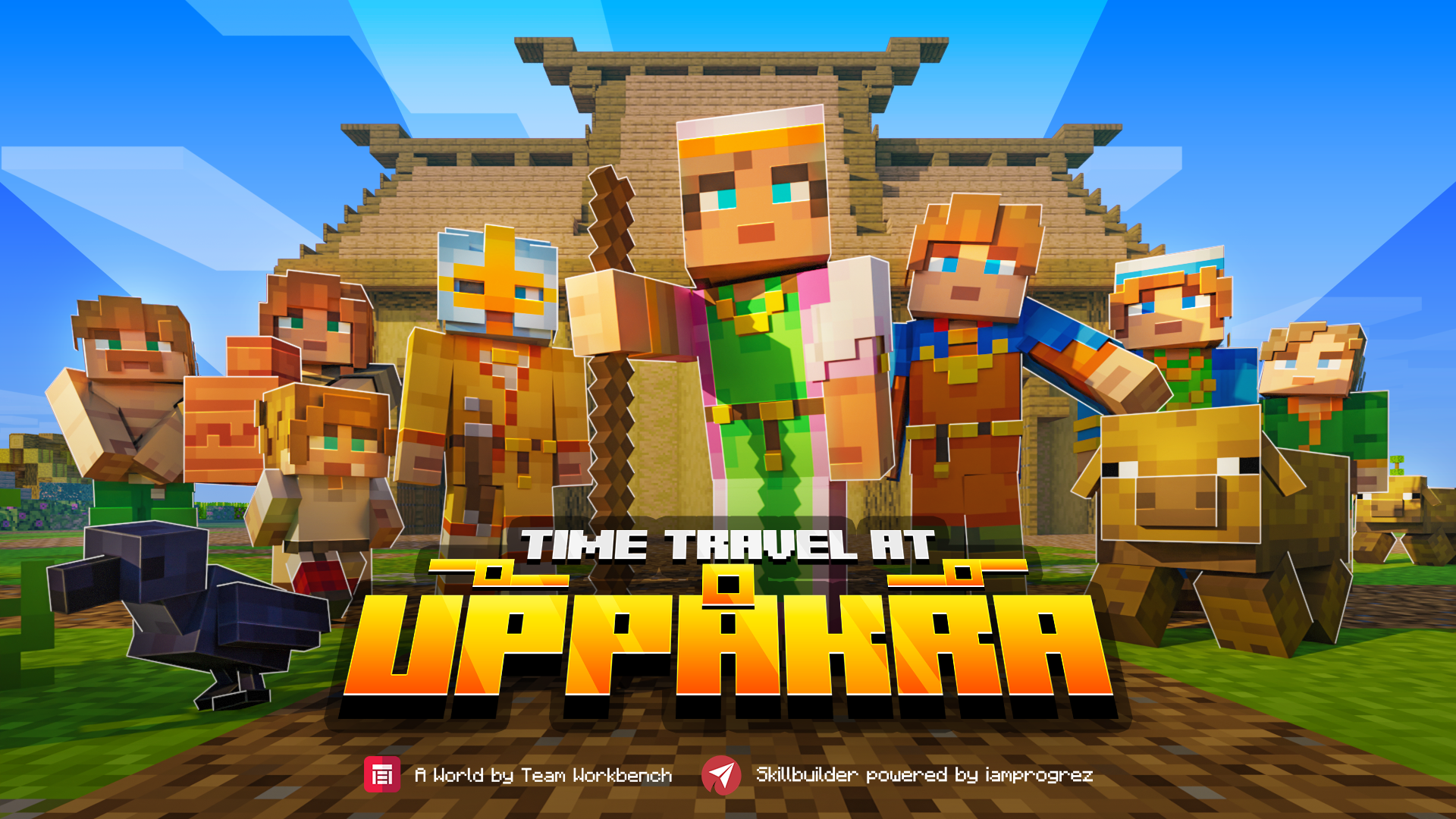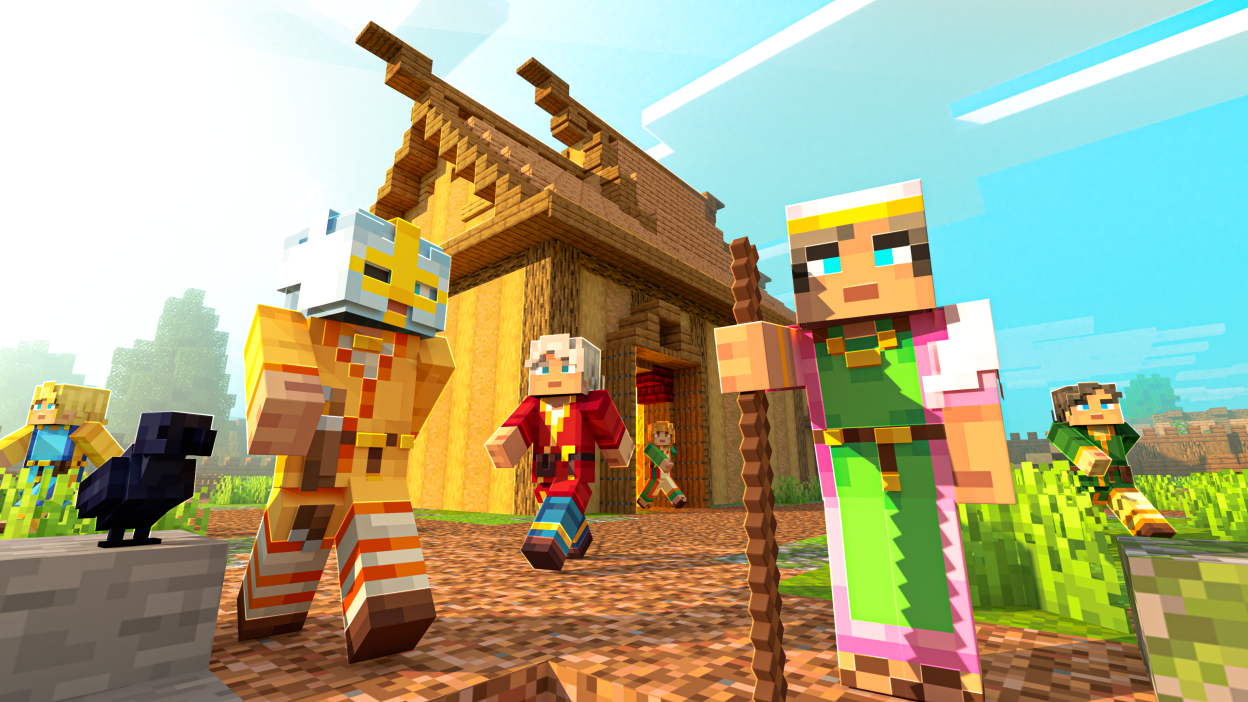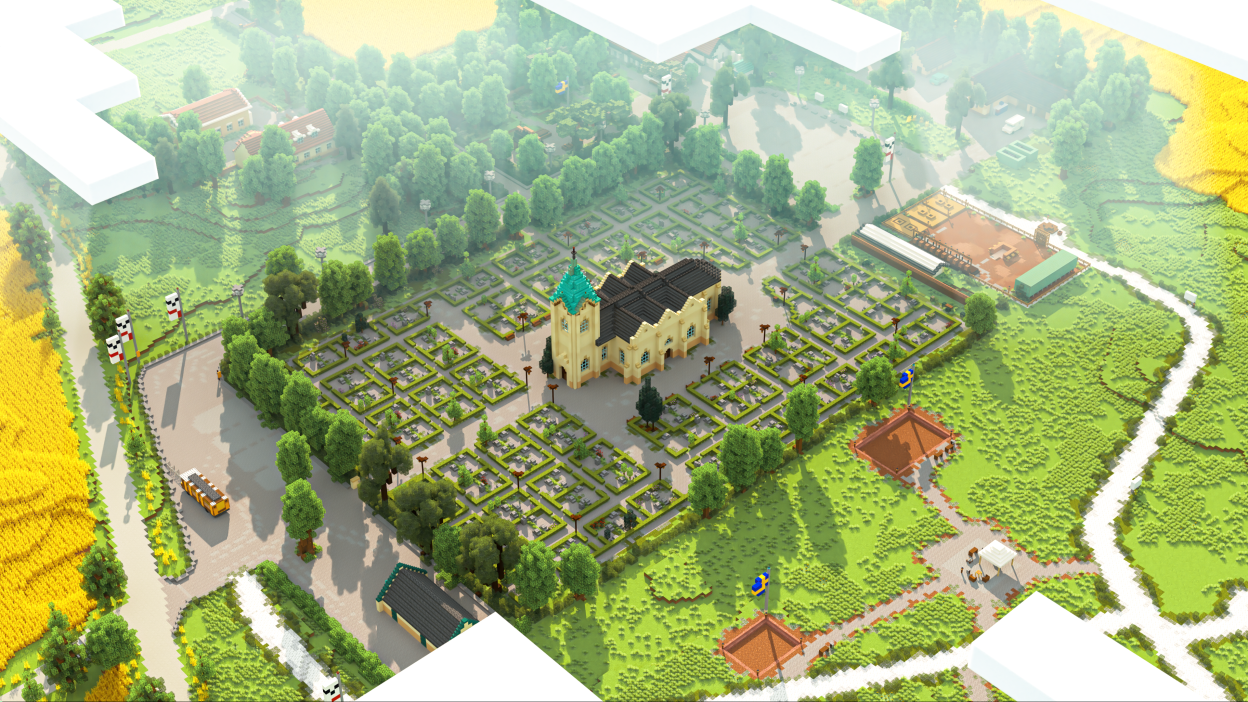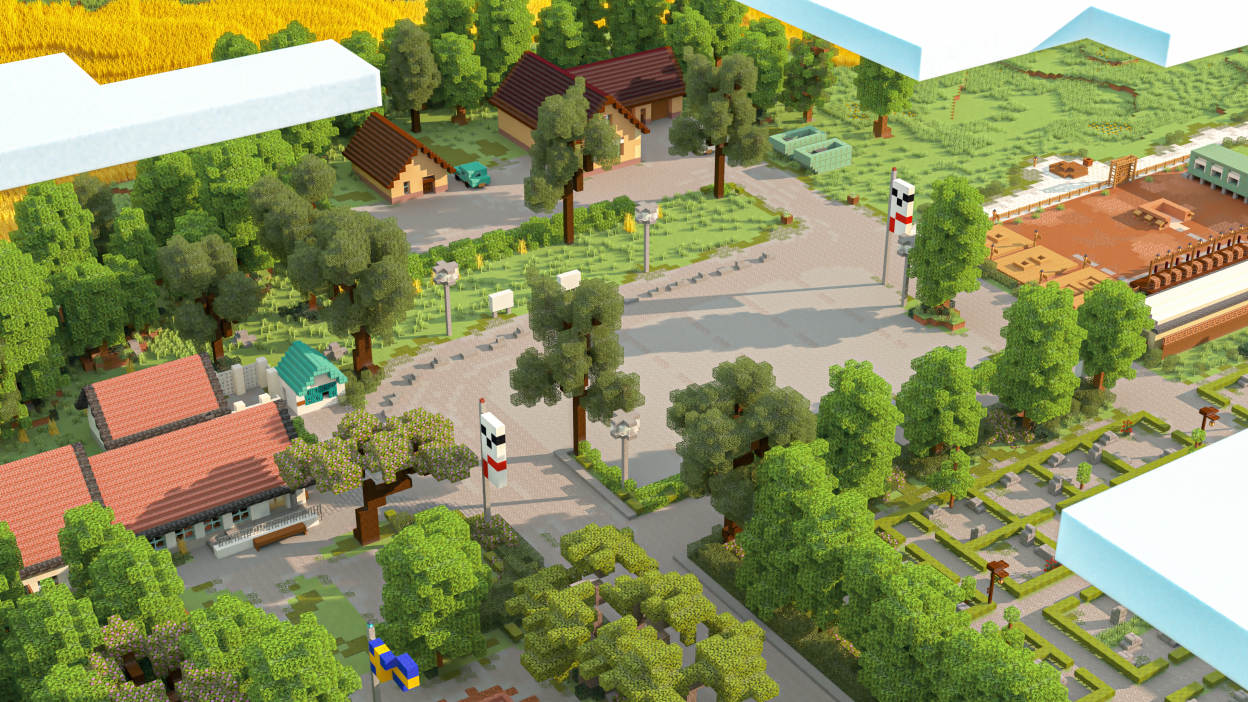Bringing history to life with Minecraft Uppåkra

Past civilizations generally come to us as artifacts locked away behind museum glass or in a textbook. The Uppåkra Foundation aims to change this, bringing the past to life with innovative programs that invite students into an active archeological excavation site. Local students come to the site to dig alongside scientists at Uppåkra, a metropolis discovered in southern Sweden that served as a center of power from 100 BC to 1000 AD. Now, this experience is available to students worldwide via Minecraft Education Edition. With a grant from Microsoft and the help of Minecraft developers, Uppåkra’s education team created a virtual, interactive excavation site. Minecraft Uppåkra is emerging in tandem with the actual dig, giving students the chance to discover newly excavated features and engage with the scientists involved in the excavation.
Awakening curiosity at Sweden’s foremost archeological site
Uppåkra, the “Pompeii of the Nordics,” is the foremost archeological site of Scandinavia. The ancient city served as the political, religious, and cultural center of the Nordic and Baltic region for over a thousand years, from 100 BC to 1100 AD. Situated in Skåne in southern Sweden, Uppåkra holds the keys to unlocking the past before the era of the Vikings. Only 0.2 percent of the city has been excavated, but this plot has already yielded 35,000 artifacts. Scientists are anticipating a trove of exciting discoveries in the remaining 99.8 percent, with the excavation of the city’s pagan temple currently underway and the royal hall set for excavation beginning in September 2022.
To help uncover Uppåkra’s history, archeologist and science educator Sofia Winge turned to a group of budding scientists known for their natural curiosity: schoolchildren. In 2018, she established Sparbanken Skånes Arkeologiskola, or the Uppåkra Archeological School; today, the school hosts 5,000 children a year from across Skåne. Armed with trowels, shovels, and brushes, visiting schoolchildren (mostly fifth graders from schools across Sweden) learn about the ancient city underfoot and sift through the soil in search of artifacts and clues. “These are real finds that the students help to dig up,” Winge points out. Students work alongside scientists to analyze, date, register the cultural find, and prepare it for exhibition. “In the end, students may be able to see their find in a museum.”
In the summer of 2019, for example, 11-year-old Ines Roos Bengtsson discovered a baby tooth in the dust. The team applied advanced techniques like spallation to analyze the find. Carbon-14 dating revealed the tooth to be 2,100 years old, dating to 100 BC. This significant discovery helped establish the early presence of humans at this site, says Dick Harrison, professor of history at Lund University: “Ines’ find is exciting because we finally have human remains from the time of Uppåkra’s oldest period.”
Ines’ discovery speaks to the impact of the Uppåkra project—the tooth marks a point of connection between two similar-aged children born 2,000 years apart. Tangible contact with the past makes it real, says Karin Nilsson, CEO of Uppåkra Arkeologiska [Archeological] Center. “Our ambition is to generate an enthusiasm with children, for them to want to participate and contribute, and in that way hopefully to promote future research,” she explains. “I personally believe that it is very important that we include children as close to science as possible. That’s when we inspire. When we do it for real.” Besides bringing the past to life, the Uppåkra experience offers an exciting way into the grade school curriculum; from excavation to exhibition, the archeological process engages natural sciences, linguistics, history, art, and communication.
Sparking children’s imagination with a digital Uppåkra
With the success of the real-life archeological dig experience, Winge and Nilsson developed a multimedia Uppåkra experience to reach children worldwide and excite their interest in science. The project, funded with a grant from Microsoft Community Development, has proceeded in two phases. First, the Uppåkra Foundation developed its Uppåkra model; now, the team has launched the virtual Uppåkra using the Microsoft gaming software Minecraft: Education Edition , in collaboration with local students, developers, and scientists. Uppåkra model . To develop the Uppåkra Foundation’s pedagogical model, Winge and Nilsson collaborated with Swedish children’s author Martin Widmark. Widmark had popularized a role-playing pedagogical technique in which children build literacy by responding to a story from a certain perspective—the “fortune teller” imagines what happens next, the “cowboy” gathers up different parts and summarizes them, the “journalist” asks the difficult questions, and most importantly for Widmark and the Uppåkra researchers, the “artist” draws the mental pictures inspired by the text.
The research team applied the artist roleplaying approach to learn from students what excited their curiosity and desire to learn, using the Uppåkra Archeology School as a case study. Working together with target groups of students and two pedagogical researchers from Malmö University, the team found they could engage students in the quest for knowledge by including them in the real excavation as much as possible: through encounters with scientists across disciplines, interaction with the artifacts, involvement with research processes, and stimulation of different senses. Virtual Uppåkra, Minecraft: Education Edition . In partnership with Minecraft developers and local students, Uppåkra’s education team applied the Uppåkra model to re-envision the excavation site as a Minecraft world. “We used the Uppåkra model to say how can we build a Minecraft [version of Uppåkra] that inspires kids to science?” says Nilsson. The Minecraft Uppåkra features the excavation of Uppåkra’s royal hall, which began in the fall of 2022 and will proceed for four years.
The team engaged student ambassadors from local schools to develop ideas for the virtual Uppåkra with their classmates. The children helped develop the Minecraft storyline and the missions for the game, and nonprofit Kodcentrum advised the student-scientist team and educating teachers in using Minecraft as a pedagogical tool in the classroom.
In line with the Uppåkra model of engaging learners through authentic experience, the goal was to make the game as interactive and real as possible. To create a real-life tie-in to the digital experience, virtual Uppåkra features three Uppåkra archeologists (including Sofia Winge) who welcome the children to the Minecraft excavation site. Children who play the game will be able to interact with these archeologists and the team of scientists who make up Uppåkra’s multidisciplinary scientific board as they play the game. These real people—professors in history and osteology, the archeologists, a famous Swedish astronaut who works in particle physics, and more—appear as characters in the game; players can book time with them or ask them scientific questions to develop their evolving hypothesis about the excavation. In this way, players can develop a sound theory based on science and critiqued by experts. As the actual excavation research progresses, students can discover to what extent their theory proved correct.
Between the hands-on excavation experience and the digital Uppåkra site on Minecraft, more children will have more ways to engage with Uppåkra. This approach is consistent with the international reach of the ancient metropolis, whose sphere of influence extended well beyond present-day Skåne to Denmark and beyond. “Together we build the pieces of the puzzle about Uppåkra,” observes Nilsson. “What else remains to be discovered there?” The Uppåkra Foundation’s virtual and on-site programs let students work alongside scientists as they piece together this puzzle, bringing to light new findings that promise to rewrite the history of the Baltic region.
Interact with Minecraft Uppåkra today!
I personally believe that it is very important that we include children as close to science as possible. That’s when we inspire. When we do it for real.
—Karin Nilsson, CEO, Uppåkra Archeological Center





